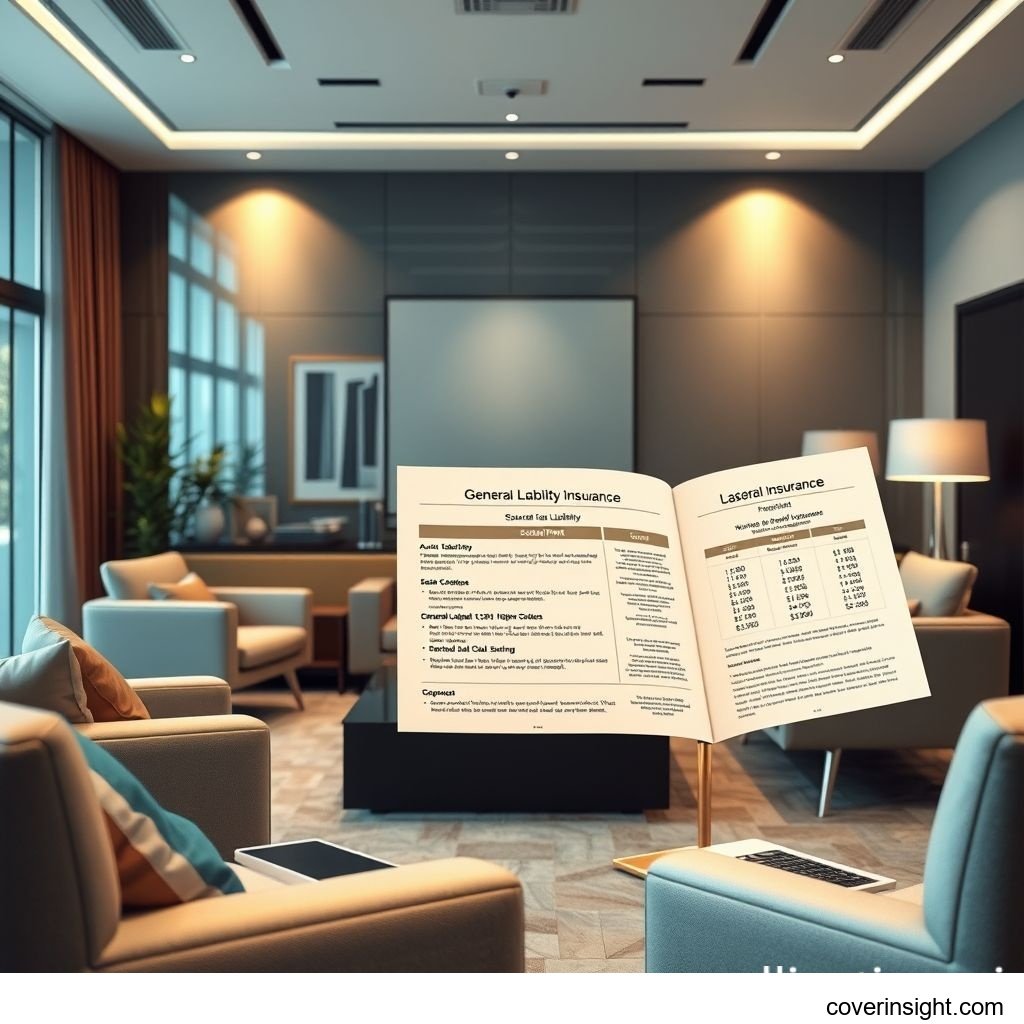US General Liability Cost: 2025 Essential Guide
Introduction
Navigating the landscape of business insurance can feel like trying to solve a complex puzzle, but understanding general liability insurance costs in the US for 2025 is paramount for any enterprise. Often called "slip-and-fall" insurance, general liability is a critical safeguard, shielding your business from potential financial ruin due to everyday risks like bodily injury, property damage, and advertising injury. In today's litigious environment, having adequate coverage isn't just a good idea—it's often a make-or-break decision for your company's longevity and peace of mind. For a broader perspective on essential protections, you might find our "US Insurance Home" guide useful.
Coverage Details
What’s Included
General liability insurance is designed to protect your business from common third-party claims. Typically, a robust policy covers:
-
Bodily Injury: This includes medical expenses, legal fees, and settlement costs if someone is injured on your business premises or due to your operations. Imagine a customer slipping on a wet floor in your retail store and breaking their arm – this coverage steps in.
-
Property Damage: If your business operations or employees cause damage to someone else's property, this coverage helps pay for repairs or replacement. For instance, a contractor accidentally punctures a water pipe in a client's home.
-
Personal and Advertising Injury: This less-known but vital component protects against claims such as libel, slander, copyright infringement in your advertisements, or even wrongful eviction. If a competitor sues you for defamation based on something in your marketing materials, this is where your policy shines.
-
Medical Payments: This usually covers small medical costs for injuries sustained by a third party on your premises, regardless of who was at fault, helping to avoid larger lawsuits.
Common Exclusions
While general liability is broad, it's not all-encompassing. Understanding what's not covered is just as important as knowing what is:
-
Professional Liability (Errors & Omissions): This protects against claims of negligence or mistakes in your professional services. A consultant giving bad advice or an accountant making a costly error would need a separate E&O policy.
-
Employee Injuries (Workers' Compensation): Your employees' injuries on the job are covered by workers' compensation insurance, a separate and often mandatory policy.
-
Auto Accidents: Accidents involving company vehicles are typically covered by commercial auto insurance.
-
Intentional Acts & Punitive Damages: General liability generally won't cover damages resulting from intentional harm or acts, nor will it cover punitive damages awarded by a court, which are meant to punish the defendant rather than compensate the plaintiff.
-
Damage to Your Own Property: This is usually covered by commercial property insurance.
-
Products Liability: While GL covers some product-related claims, businesses that manufacture or sell products might need dedicated products liability coverage for defects or harm caused by their goods.
Cost Analysis
Price Factors
The cost of general liability insurance can vary wildly, reflecting the unique risk profile of each business. Several key factors weigh heavily on your premiums:
-
Industry & Risk Level: This is arguably the biggest determinant. A high-risk industry like construction or roofing will pay significantly more than a low-risk one like a freelance graphic designer. For instance, according to recent data from state insurance departments, businesses in the construction sector in states like California and New York often see general liability premiums that are 3-5 times higher than those for typical office-based businesses, reflecting the increased potential for property damage and bodily injury claims.
-
Location: Where your business operates matters. Businesses in urban areas or states with higher litigation rates often face higher premiums. For example, a small café in Portland, Oregon, known for its vibrant but sometimes litigious atmosphere, might pay slightly more than an identical café in a more rural part of the state, due to the higher frequency of slip-and-fall claims in densely populated areas.
-
Business Size & Revenue: Larger businesses with more employees, higher revenues, and a greater public presence generally have more exposure and thus higher costs.
-
Claims History: A business with a history of frequent or expensive claims will likely pay higher premiums, as insurers view them as a greater risk.
-
Coverage Limits & Deductibles: Choosing higher coverage limits (the maximum an insurer will pay) will increase your premium. Conversely, opting for a higher deductible (what you pay out-of-pocket before insurance kicks in) can lower your premium, but means you assume more initial risk.
-
Years in Business: Newer businesses might pay slightly more until they establish a claim-free track record.
Saving Tips
While you can't control every factor, there are smart ways to manage your general liability insurance costs:
-
Implement Robust Risk Management: Proactive safety measures can significantly reduce your chances of a claim. This includes regular property maintenance, employee safety training, clear signage for hazards, and robust cybersecurity practices (though cyber insurance is separate, good practices reduce overall risk). An insurance provider will view a well-maintained, safety-conscious business more favorably.
-
Shop Around: Don't settle for the first quote. Get multiple quotes from different insurers to compare coverage and pricing. Online marketplaces and independent agents can help you do this efficiently.
-
Bundle Policies: Many insurers offer discounts if you purchase multiple policies from them, such as general liability, commercial property, and business interruption insurance, often through a Business Owner's Policy (BOP). For more comprehensive information, explore "Insurance Resources Global".
-
Review Coverage Annually: Your business needs evolve. Periodically review your policy with your agent to ensure your coverage still aligns with your current risks and operations. You might be over-insured in some areas or under-insured in others.
-
Increase Your Deductible: If you have a healthy cash reserve and are confident in your risk management, opting for a higher deductible can lower your monthly premium. Just make sure it's an amount you can comfortably afford out-of-pocket if a claim arises.
FAQs
-
How much does general liability insurance cost?
The cost varies widely, but small businesses in low-risk industries might pay anywhere from $300 to $1,000 annually. Higher-risk businesses or larger operations could pay several thousand dollars or more. For a detailed breakdown, check our "General Liability Insurance Cost: US Guide 2025".
-
What affects premiums?
Premiums are primarily affected by your industry's risk level, business size and revenue, location, claims history, the coverage limits you choose, and your deductible amount.
-
Is it mandatory?
Federally, general liability insurance is not mandatory in the US. However, individual states, cities, or clients may require it (e.g., landlords requiring tenants to carry GL), and many professional licenses mandate it. While not federally required like health insurance (which you can learn more about at "Healthcare.gov"), it's an essential safeguard for most businesses.
-
How to choose?
To choose the right policy, assess your business's specific risks, compare quotes from multiple reputable insurers, understand the coverage limits and exclusions, and consider working with an experienced insurance agent who can guide you. You can often verify an insurer's legitimacy through your "State Insurance Departments".
-
Consequences of no coverage?
Operating without general liability insurance leaves your business vulnerable to devastating financial losses. A single lawsuit for bodily injury or property damage could bankrupt your company, force you to sell assets, or lead to significant out-of-pocket legal fees and settlements. It's truly not worth the risk.
Author Insight & Experience
Based on my experience observing countless businesses, particularly small to medium-sized ones here in the US, skimping on general liability insurance is a false economy. I've seen firsthand how a seemingly minor incident—a spilled drink leading to a slip, a misplaced tool damaging a client's driveway—can escalate into a costly legal battle. It's not just about protecting your assets; it's about protecting your peace of mind and the very future of your enterprise. Think of it as the foundational safety net for your entrepreneurial tightrope walk. You never want to be caught flat-footed when the unexpected inevitably rears its head.








Comments